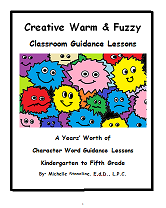Sand Tray Therapy / Exposure Therapy Student #4
by Sand Tray Therapy Student
(Sandy Springs, Ga.)
Phobias, Exposure Therapy, and the Sand Tray Therapy
Exposure Therapy is a technique used in cognitive behavioral therapy to treat anxiety disorders such as phobias. It involves exposing the client to a feared object without danger in order to overcome an anxiety. It is done in a series of steps, from low level of exposure to a high level of exposure. By utilizing the sand tray therapy as a therapeutic tool, a client can look at their phobia from a different perspective: in the tray. By doing so they hopefully will gain insight into why a phobia might appear irrational, and through exposure learn how to properly cope with it.
Exposure Therapy was first used as a therapeutic tool in the 1950’s, when South African psychologists and psychiatrists brought their methods to the Maudsley Hospital in London, England. Public interest in exposure first came about thanks to James Taylor, a psychologist at the University of Cape Town in South Africa. He was the first recorded psychologist to use exposure therapy treatment for anxiety. The effectiveness of this method grew in popularity, and led to the creation of other methods, including systematic desensitization and flooding.
Exposure therapy seems to be an effective method of helping clients work on overcoming their phobias. It has been shown to be one of the most effective anxiety treatments for people with anxiety disorders. It is an effective technique because it involves having the client “retrain their brain.” This allows the client’s brain to stop sending fear signals when there is not any danger present. When a client has a phobia, their first reaction is to avoid the fear, as it makes them anxious and uncomfortable. This further strengthens the fear and could even make the phobia even worse.
The part of the brain that is affected by phobias is the amygdala. This structure is what is responsible for the “fight or flight” response that comes into play during feelings of fear or danger. When the amygdala mistakenly senses danger that isn’t actually there, it reacts just as if the danger were real. It’s job is to keep you alert and safe under any circumstance. It is crucial when utilizing exposure therapy to retrain this part of the brain to properly differentiate between actual danger and falsified danger.
Sandtray therapy appears to be a beneficial tool while working with exposure therapy for different reasons. First, the exposure a client encounters in the tray is a lot less threatening than in real life situations. The client is able to dictate just how much exposure they will have in regards to their phobia, and the treatment is client directed. Sandtray therapy has been shown to give voice to clients who otherwise would not be comfortable confronting their fears in real life situations. Hopefully through starting with a tray, a client can work their way up to dealing with their fears and phobias hands on in the real world.
The pluses of utilizing exposure therapy in the sandtray are that it is a less intimidating method of confronting phobias for certain individuals than a very direct hands on approach. Children are an example of a population where using this would be a plus. A child is more likely to open up and talk about what scares them through play, and they are able to take control of their fear without having to worry about judgment from friends, peers, or caregivers. Another plus of using the sandtray is that the exposure happens in a controlled environment fully. It appears to be a lot easier to confront things in the tray than in the real world, especially for those that have a harder time dealing with traditional talk therapy.
There does not seem to be very many minuses when using the sandtray and exposure therapy together. The only thing that seems to be a potential problem would be that the time it takes for exposure to increase could take drastically longer due to the client being in full control over their tray. Besides this, using the two together seems to have many positive affects.
Limitations of this method seem to be the materials present when using a sandtray. The amount of miniatures that could be needed to express the fears of a client might be limited. It is important when utilizing the sandtray and exposure therapy together that the therapist has a wide variety and assortment of miniatures to give the client options to choose from in creating their world.
The potential dangers of using the methods together is that this might not be appropriate for children who have even deeper issues that could be causing the phobia in the first place. Issues of sexual, mental, or physical abuse could be an underlying cause that go fully unnoticed, and in turn could be the real problem. It is important that before this method is utilized to try other methods and seeing if those would be beneficial first.
Exposure Therapy is a beneficial tool that can be used to treat phobias. Bringing the sandtray into the picture allows for another potential affective way of exposing clients to their phobias in a safe and healthy manner. Populations such as kids could especially benefit from this nonthreatening way of administering this type of therapy.
This type of therapy appears to be very soothing and beneficial to clients. It allows for a different perspective on a traditional method of exposure therapy. It would be interesting to see this implemented in reality, as I am sure the benefits would be very noticeable and affective in giving the client an opportunity to overcome a phobia.
How to Use The Sand Tray for Sand Tray Therapy Link:
More Ideas on Sand Tray Therapy
For more free ideas on creative therapy visit the link below:
Creative Counseling 101.com Home
Disclaimer: This website and its content is intended for trained licensed mental health professionals and school certified mental health professionals to use for their clients / students at their own discretion.
*If you ignore the disclaimer above are using these techniques on yourself and you feel any discomfort or upset it is highly suggested that you seek out a licensed mental health professional immediately.
"Beyond Art Therapy" is the concept from Dr. Stangline that combines all creative fields in therapy. It is not the traditional "art therapy" but goes beyond to include sand tray therapy, play therapy, mindfulness, meditation, color therapy, cognitive behavioral therapy, and a vast majority of other therapies.
For any other type of mental health emergency call your local 911 / Police Number immediately.
Dr. Stangline does not offer advice / suggestions to anyone who is not a professional mental health provider, or a student who is studying this field and has questions about mental health programs of study.
See our Exciting Selection of eBooks:
Award Winning:
Creative Counseling 101 eBook
Our Best Seller!
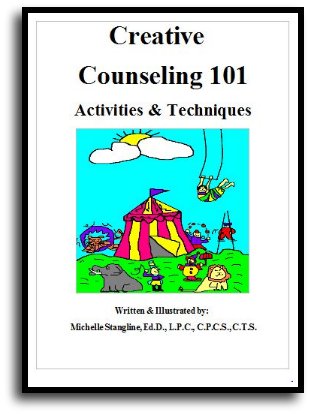
Step By Step Therapy:
Learn how to be a more Creative Therapist with the Book that started it all!
- Graduate School Counseling book used by hundreds of graduate counseling students!
- Includes full color reproducible worksheets with most activities.
- Winner of the Counselor Writer of the Year Award, 2011, Georgia Regional Award
Download Your Copy Today Only $39.95:
See Creative Counseling 101 eBook Information Here:
Get the Set
of all four
eBooks for only $98.95:
An incredible collection of how to do therapy eBooks!
A $159.80 Value,
You Save Over $60!
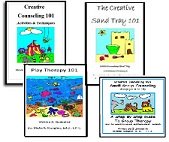
Get your complete set of the Creative Counseling 101.com eBooks by Dr. Michelle Stangline for only $98.95, that's less than $25.00 per eBook (Regular Price is $39.95 for each eBook.).
Your complete set includes:
- Creative Counseling 101
- Creative Group Counseling 101
- Creative Play Therapy 101
- Creative Sand Tray 101
For more information click the link below:
See Complete Set of eBooks For Sale Here:
New!!! "Beyond Art Therapy" 101 eBook
Over 300 pages of Beyond Art Therapy activities and techniques. Learn what I teach graduate counseling students!
See the link below for more information.
Only $39.95
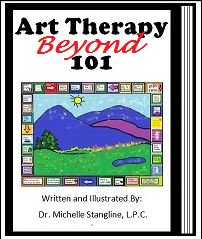
See More Invividual eBooks For Sale:
Sand Tray Therapy 101 eBook:
Learn how to do Sand Tray Therapy or enhance your skills.
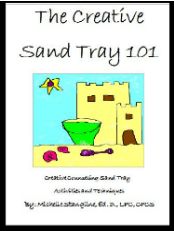
Play Therapy 101 eBook
Learn how to do play therapy or enhance your skills.
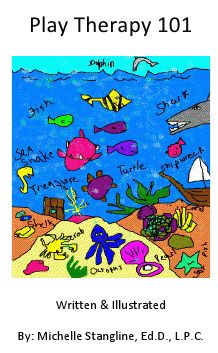
Small Group Counseling eBook For Sale:
Learn how to do creative group therapy and enhance your skills.
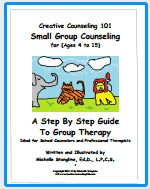
School Counselor Guidance Lesson & Social Stories eBook for sale:
Get a year's worth of school counselor guidance lessons with "Creative Warm & Fuzzy Classroom Guidance Lessons eBook". Introduce your students to the "Warm & Fuzzy Way". Click the link below for more information:
Warm & Fuzzy School Counselor Guidance Lessons eBook
